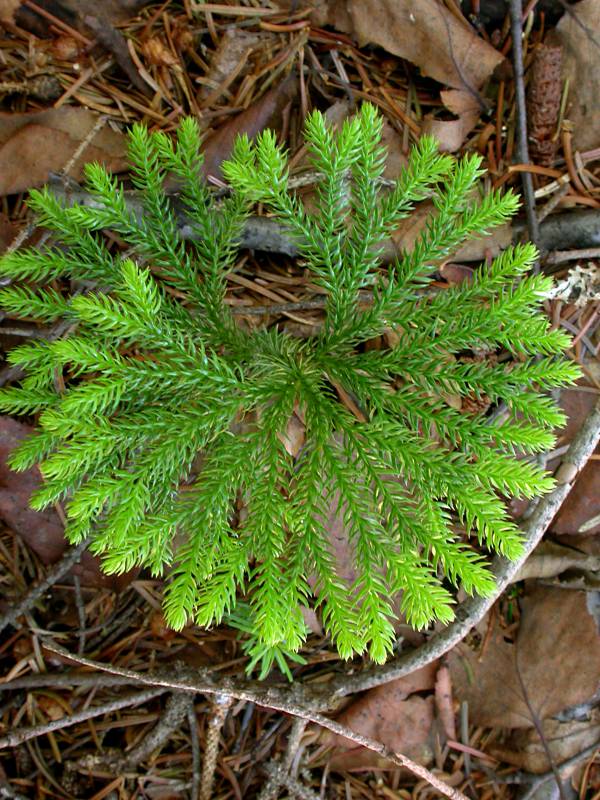Lycopodium clavatum
Lycopodium dendroideum
common clubmoss, elk-moss
Needle-like, to 4 mm long, 6-ranked along stem. On horizontal side branches the leaves are arranged in two rows on top of stem, one row on each side of stem, and two rows on bottom of stem.
In one to several spore cones (strobili) at tips of erect stems;
cones greenish to tan, 12-55 mm long.
In Hitchock & Cronquist\\'s Flora of the Pacific Northwest, this species is treated as Lycopodium obscurum. Current taxonomy splits L. obscurum s. lat. into three distinct species. The other two occur only in eastern North America. They can be differentiated by the leaf arrangement on horizontal side branches: L. obscurum s.str. has leaves in one row on top, two rows on each side in which the leaves are twisted and flattened, and one row on the bottom in which the leaves are much reduced, while L. hickeyi has leaves arranged in one row on top, two rows on each side, and one row on the bottom, in which none of the are leaves twisted-flattened, and the lower row leaves are not reduced in size.
See Flora of North America for an updated treatment.
Lycopodium clavatum
Lycopodium dendroideum
- Local floras:
BC,
CA,
OR,
WA
- Local Web sites:
CalFlora,
CalPhotos,
Flora NW,
PNW Herbaria
WildflowerSearch
iNaturalist (observations)
USDA Plants Database
- LBJ Wildflower Center
- SEINet
- Plants of the World Online
- Encyclopedia of Life
- Wikipedia
- Google Image Search



